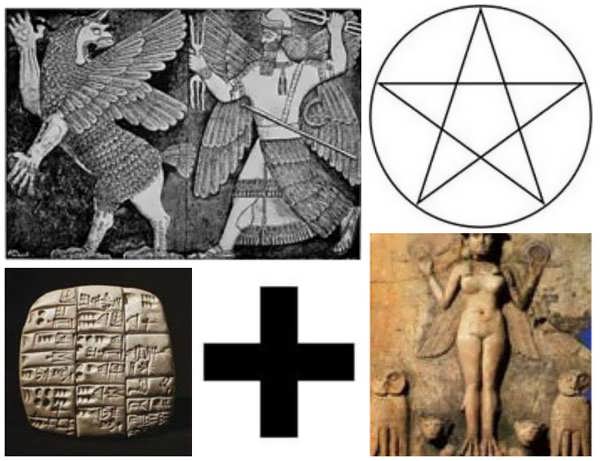Sumerian is the first known written language. Its script is called cuneiform, which means “wedge-shaped.” The Cuneiform script is one of the earliest known forms of written expression. Created by the Sumerians in the late 4th millennium BC, cuneiform writing began as a system of pictographs. Over time, the pictorial representations became simplified and more abstract. Cuneiform is the most well-known symbol people relate to when thinking of the Sumerians.
Long before the Bible, There were the Sumerian Tablets. The Sumerians were possibly the earliest society to emerge in the world, in Southern Mesopotamia more than 5000 years ago. It’s hard to come across evidence that is conclusive about how life really was back then, but suffice to say that Sumeria has always been a place of fascination.
Here are some popular Sumerian symbols from that time period.
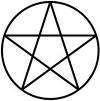 Pentagram – Perhaps the most well-known occult symbol of all times, the pentagram also dates back to ancient Sumeria. In Sumerian pictographic writing, it was an ideogram used to describe Merovingian Kings as “lofty ones” or “shining ones” and was presented in its inverted form. The pentagram’s association with black magic probably derives from the fact that these kings were thought to possess magical powers, so it was both a symbol of their dynasty and their doctrine. This explains why a seemingly Satanic symbol was important to the Cathars and why it figures so prominently in the imagery associated with the Grail mystery, Rennes-le-Chateau, etc. Pentagram – Perhaps the most well-known occult symbol of all times, the pentagram also dates back to ancient Sumeria. In Sumerian pictographic writing, it was an ideogram used to describe Merovingian Kings as “lofty ones” or “shining ones” and was presented in its inverted form. The pentagram’s association with black magic probably derives from the fact that these kings were thought to possess magical powers, so it was both a symbol of their dynasty and their doctrine. This explains why a seemingly Satanic symbol was important to the Cathars and why it figures so prominently in the imagery associated with the Grail mystery, Rennes-le-Chateau, etc. |
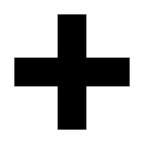 The equal-armed cross employed by the Templars shows up extensively in ancient Sumerian carvings. The equal-armed cross employed by the Templars shows up extensively in ancient Sumerian carvings. |
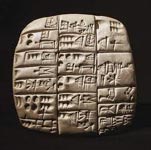 Cuneiform – When people think of the Sumerians, they often think of Cuneiform, the style of writing they used. Cuneiform is by far the most well-known Sumerian symbol. Cuneiform is the simplest and earliest of the world’s first written language. Cuneiform – When people think of the Sumerians, they often think of Cuneiform, the style of writing they used. Cuneiform is by far the most well-known Sumerian symbol. Cuneiform is the simplest and earliest of the world’s first written language. |
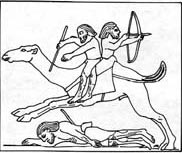 The concept or symbol of dual riders goes back to ancient Sumeria, where it was employed for purely tactical considerations. This symbol shows up in later Templar drawings and other artwork. The concept or symbol of dual riders goes back to ancient Sumeria, where it was employed for purely tactical considerations. This symbol shows up in later Templar drawings and other artwork. |
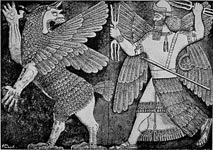 Winged Man – In Sumerian tablets we often see a man with a beard and wings on his back, this is a popular Sumerian symbol. Winged Man – In Sumerian tablets we often see a man with a beard and wings on his back, this is a popular Sumerian symbol. |
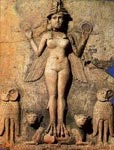 Lilith – Lilith is a pre-Sumerian/Babylonian goddess who is perhaps better known for Her role in Hebrew legend. Called “The Dark Maid” or “Maiden of Desolation,” Lilith is associated with owls and is a creature of the night. She is depicted on this Babylonian clay plaque from 2000-1600BCE as a beautiful winged woman with bird’s feet and claws. Lilith – Lilith is a pre-Sumerian/Babylonian goddess who is perhaps better known for Her role in Hebrew legend. Called “The Dark Maid” or “Maiden of Desolation,” Lilith is associated with owls and is a creature of the night. She is depicted on this Babylonian clay plaque from 2000-1600BCE as a beautiful winged woman with bird’s feet and claws. |

